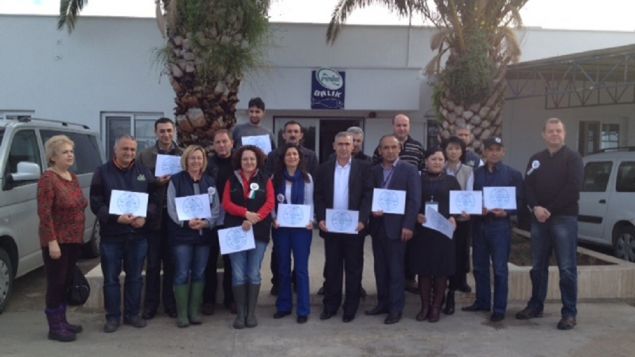

The aquaculture production activities in Central Asian countries particularly in inland waters have declined dramatically after the collapse of the USSR in the beginning of the 1990s, however following the adoption of the Central Asia regional program for fisheries and aquaculture developments the aquaculture activities in the region have started to increase in addition to the awareness raising effects it had on the governments. Along with other aquaculture activities, larva culture and small fish production became more prominent over time while their market size increased.
It was discovered that the shortcomings related to the aquaculture production within the region particularly at the larval stage were mainly originating from the inadequacies with regards to breeding live feed, which makes up the most fundamental stage of aquaculture production and in consequence, it was deemed necessary to organize training programs in the aforementioned countries with the cooperation of FAO and our country that aim to eliminate these inadequacies. Assoc. Prof. Özgür Altan, who works as an expert in the Central Asia Regional Program for Fisheries and Aquaculture, has made an offer to our company in order to carry out this training program with our cooperation given that we have a marine hatchery, which is the first of its kind in Turkey, and we possess the required technical infrastructure along with high levels of experience.
The first level of nutrition consumed by crustaceans and fish in the nature are plankton species (diatoms, flagellates, copepods, cladocera, rotifers and ciliates etc.). Aquaculture production media can be attained by copying these natural habitats and adapting them to the systems that are based on the principle of maximizing the amount of live breeding in a unit area in the most economic way. However, in order for the aforementioned principle to be applied, maximum levels of control, sensitivity and attention are required, which in turn have a direct impact on the success of the production process.
The purpose of the training is determined as ensuring that the participants apply what they have learnt during the training to their own businesses and countries, and that the necessary improvements are put into place both in the public and the private sector. The objective of the training was to “demonstrate live production techniques and their use in larva culture through applied examples”, and in line with this objective, these topics were further highlighted through the seminars given by Prof. Tahir Atıcı and Assist. Prof. Serpil Serdar from Ankara University, both experts on the subject, and participants were informed about the practices that were carried out in the hatchery.
The studies carried out with the purpose to inform the participants and by using applied methods are as the following;
Hatchery management in fish farms,
Larva feeding and commercially significant phytoplankton and zooplankton breeding strategies,
Live feed production planning in accordance with daily feeding strategies,
Challenges that may be faced during production and solution methods,
Algae purification and production methods,
Rotifer production and enrichment methods,
Strategies for the amplification and enrichment of artemia (brine shrimp) cysts.
On the last day of the training, participants visited the net cages and the program ended after the participants were informed about the feeding activities carried out at the barges as well as the aquaculture production in net cages.
Register to our newsletter in order to be aware of our announcements and news.
